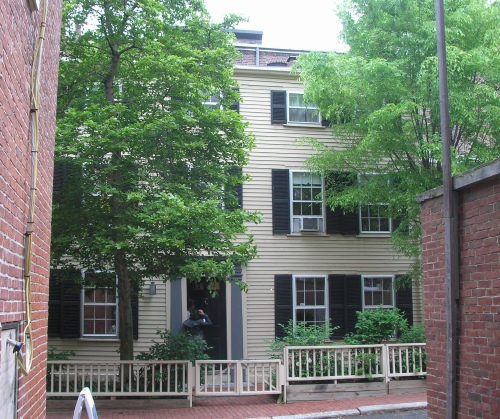3 Smith Court, Boston (1799)

Smith Court, on Boston’s Beacon Hill, was the center of the city’s African American community in the nineteenth century. The house at 3 Smith Court, a double house with a common entryway, was built in 1799 by two white bricklayers. Just the year before, a ropewalk had been demolished on the property leading to the construction of residences. By 1830, black families were renting the house at 3 Smith Court. The longest resident of the house was was James Scott, an African American clothier, who became a tenant in 1839 and bought the property in 1865. Originally from Virginia, Scott was an abolitionist who was arrested in 1851 for his role in freeing fugitive slave Shadrach Minkins. From 1851-1856, part of the house was rented by William C. Nell, a journalist and abolitionist, who led the campaign to integrate Boston’s public schools. He became the first published African American historian when he wrote Services of Colored Americans in the Wars of 1776 and 1812 (1851) and Colored Patriots of the American Revolution (1855).
I just stumbled upon your site—thanks for highlighting MA’s historic architecture! I have a quick question: do you know who illustrated/painted the image in your blog masthead? I’d love to see the whole piece, but I don’t know where to find it, or even look for it. If you have any clues, I’d appreciate it.
Keep up the good work!
The image is from an 1881 birds eye view of North Adams, Mass.
In the 1848-1849 Boston City Directory there is a street called Smith Place. A woman by the name Phebe Lew is listed as living at that address. Could this be one in the same street as Smith Court as I can find no Smith Place in any Boston map of that time.
Thank You!